Alberto FERRERO Filippo GAZZOLA Maurizio ZANOTTI Elements of Advanced
Mathematical Analysis
for Physics and Engineering 
 Alberto Ferrero Universit del Piemonte Orientale 15121 Alessandria - Italy Filippo Gazzola Department of Mathematics Politecnico di Milano 20133 Milano - Italy Maurizio Zanotti Structural and Machine designer Maurizio ISBN 978-88-7488-645-6First edition: September 2013 Publishing Manager: Alessandro Parenti Editorial Staff: Gabriella Gatti, Giancarla Panigali, Carlotta Lenzi Translated by Ilaria Lucardesi All rights reserved. The reader can photocopy this publication for his personal purpose within the limit of 15% of the total pages and after the payment to SIAE of the amount foreseen in the art. 68, comma 4, L. 22 April 1941, n. 663, that includes the agreement reached among SIAE, AIE, SNS and CNA, CONFARTIGIANATO, CASA, CLAAI, confcommercio, confesercenti on December 18, 2000. 2, 20121 Milano, Telefax 02-80.95.06, e-mail:
Alberto Ferrero Universit del Piemonte Orientale 15121 Alessandria - Italy Filippo Gazzola Department of Mathematics Politecnico di Milano 20133 Milano - Italy Maurizio Zanotti Structural and Machine designer Maurizio ISBN 978-88-7488-645-6First edition: September 2013 Publishing Manager: Alessandro Parenti Editorial Staff: Gabriella Gatti, Giancarla Panigali, Carlotta Lenzi Translated by Ilaria Lucardesi All rights reserved. The reader can photocopy this publication for his personal purpose within the limit of 15% of the total pages and after the payment to SIAE of the amount foreseen in the art. 68, comma 4, L. 22 April 1941, n. 663, that includes the agreement reached among SIAE, AIE, SNS and CNA, CONFARTIGIANATO, CASA, CLAAI, confcommercio, confesercenti on December 18, 2000. 2, 20121 Milano, Telefax 02-80.95.06, e-mail:  40131 Bologna - Via U. 2, 20121 Milano, Telefax 02-80.95.06, e-mail:
40131 Bologna - Via U. 2, 20121 Milano, Telefax 02-80.95.06, e-mail:  40131 Bologna - Via U.
40131 Bologna - Via U.
Terracini 30 - Tel. 051-63.40.113 - Fax 051-63.41.136 www.editrice-esculapio.it Contents Preface Deep comprehension of applied sciences requires a solid knowledge of Mathematical Analysis. For most of high level scientific research, the good understanding of Functional Analysis and weak solutions to differential equations is essential. This book aims to deal with the main topics that are necessary to achieve such a knowledge. Still, this is the goal of many other texts in advanced analysis; and then, what would be a good reason to read or to consult this book? In order to answer this question, let us introduce the three Authors. Alberto Ferrero got his degree in Mathematics in 2000 and presently he is researcher in Mathematical Analysis at the Universit del Piemonte Orientale.
Filippo Gazzola got his degree in Mathematics in 1987 and he is now full professor in Ma thematical Analysis at Politecnico di Milano. Maurizio Zanotti got his degree in Mechanical Engineering in 2004 and presently he is structural and machine designer and lecturer professor in Mathematical Analysis at Politecnico di Milano. The three Authors, for the variety of their skills, decided to join their expertises to write this book. One of the reasons that should encourage its reading is that the presentation turns out to be a reasonable compromise among the essential mathematical rigor, the importance of the applications and the clearness, which is necessary to make the reference work pleasant to the readers, even to the inexperienced ones. The range of treated topics is quite wide and covers the main basic notions of the scientific research which is based upon mathematical models. We start from vector spaces and Lebesgue integral to reach the frontier of theoretical research such as the study of critical exponents for semilinear elliptic equations and recent problems in fluid dynamics.
This long route passes through the theory of Banach and Hilbert spaces, Sobolev spaces, differential equations, Fourier and Laplace transforms, before which we recall some appropriate tools of Complex Analysis. We give all the proofs that have some didactic or applicative interest, while we omit the ones which are too technical or require too high level knowledge. This book has the ambitious purpose to be useful to a broad variety of readers. The first possible beneficiaries are of course the second or third year students of a scientific course of degree: in what follows they will find the topics that are necessary to approach more advanced studies in Mathematics and in other fields, especially the Physics and Engineering. This text could be also useful to graduate students who want to start a Ph.D. course given by Filippo Gazzola for several years at Politecnico di Milano. course given by Filippo Gazzola for several years at Politecnico di Milano.
Finally, this book could be addressed also to the ones who have already left education far-back but occasionally need to use mathematical tools: we refer both to university professors and their research, and to professionals and designers who want to model a certain phenomenon, but also to the nostalgics of the good old days when they were students. It is precisely for this last type of reader that we have also reported some elementary topics, such as the properties of numerical sets and of the integrals; moreover, every chapter is provided with examples and specific exercises aimed at the involvement of the reader. Let us start immediately inviting the reader to find an anomaly among the six formulas appearing in the cover. This book is the translation from Italian of the book Elementi di Analisi Superiore per la Fisica e lIngegneria. The translation is due to Ilaria Lucardesi. Chapter 1 Banach and Hilbert spaces In this chapter we present the basic notions of Functional Analysis that will be useful in the following chapters.
Abstract functional spaces and their properties are an essential tool in the study of integral transforms and partial differential equations. The first part of the chapter is devoted to the definitions and the properties of Banach spaces. Such spaces are nothing else than vector spaces in which is defined a positive function, called norm. The norm allows to measure the distance between two vectors of the space. In this way, thanks to the acquired structure of metric space, on a Banach space it will be possible to introduce the notions of convergence of a sequence, of limit and of continuity of a functional. Banach spaces are endowed with a further fundamental property, the completeness, whose definition can be found in this chapter.
In the remaining part of the chapter we analyze more in detail Hilbert spaces and the linear mappings between them. Hilbert spaces are Banach spaces on which is possible to define a scalar product. Particular emphasis is also given to the spectral properties of the linear mappings from a Hilbert space into itself. 1.1Vector spaces and norms Let us begin with a list of basic notions of Linear Algebra. Definition 1.1.1.Let be the real field
be the real field or the complex field
or the complex field . The elements of the field
. The elements of the field will be called scalars.
will be called scalars.
Avector space(or linear space) over the field is a non empty set X such that:(i) for every pair of elements x, y X there exists a third element of X, denoted by x + y and called sum of x plus y,(ii) for every x X and
is a non empty set X such that:(i) for every pair of elements x, y X there exists a third element of X, denoted by x + y and called sum of x plus y,(ii) for every x X and there exists an element of X, denoted by x and called product of and x.Such operations must satisfy the following properties:
there exists an element of X, denoted by x and called product of and x.Such operations must satisfy the following properties:
Next page
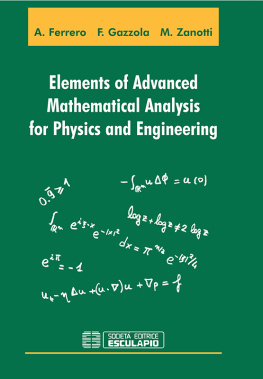
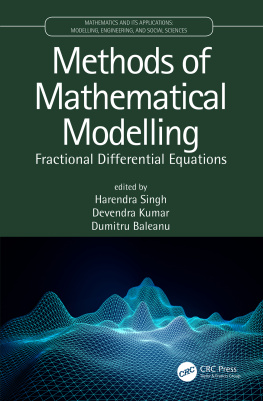
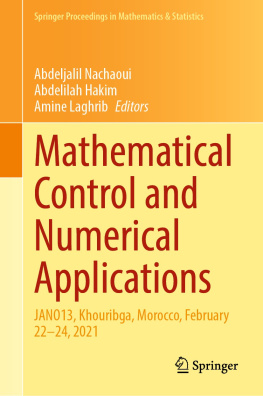


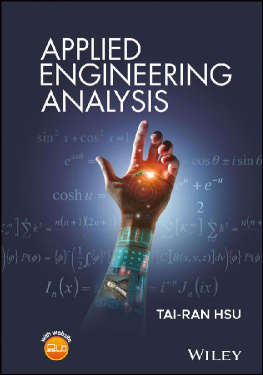
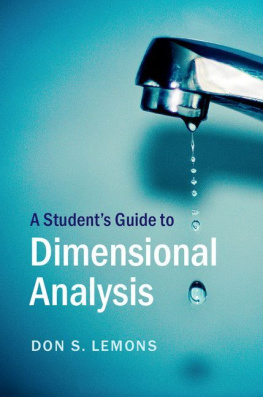
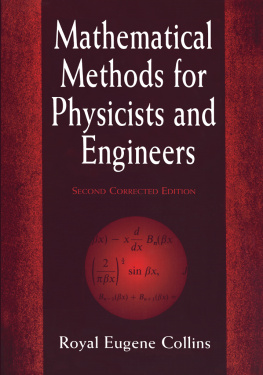
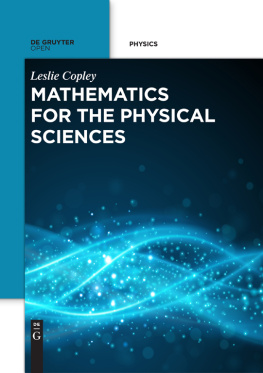
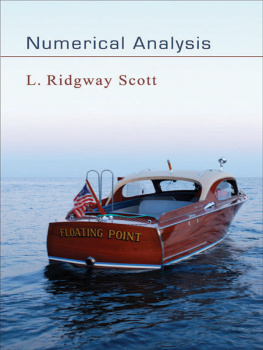

 Alberto Ferrero Universit del Piemonte Orientale 15121 Alessandria - Italy Filippo Gazzola Department of Mathematics Politecnico di Milano 20133 Milano - Italy Maurizio Zanotti Structural and Machine designer Maurizio ISBN 978-88-7488-645-6First edition: September 2013 Publishing Manager: Alessandro Parenti Editorial Staff: Gabriella Gatti, Giancarla Panigali, Carlotta Lenzi Translated by Ilaria Lucardesi All rights reserved. The reader can photocopy this publication for his personal purpose within the limit of 15% of the total pages and after the payment to SIAE of the amount foreseen in the art. 68, comma 4, L. 22 April 1941, n. 663, that includes the agreement reached among SIAE, AIE, SNS and CNA, CONFARTIGIANATO, CASA, CLAAI, confcommercio, confesercenti on December 18, 2000. 2, 20121 Milano, Telefax 02-80.95.06, e-mail:
Alberto Ferrero Universit del Piemonte Orientale 15121 Alessandria - Italy Filippo Gazzola Department of Mathematics Politecnico di Milano 20133 Milano - Italy Maurizio Zanotti Structural and Machine designer Maurizio ISBN 978-88-7488-645-6First edition: September 2013 Publishing Manager: Alessandro Parenti Editorial Staff: Gabriella Gatti, Giancarla Panigali, Carlotta Lenzi Translated by Ilaria Lucardesi All rights reserved. The reader can photocopy this publication for his personal purpose within the limit of 15% of the total pages and after the payment to SIAE of the amount foreseen in the art. 68, comma 4, L. 22 April 1941, n. 663, that includes the agreement reached among SIAE, AIE, SNS and CNA, CONFARTIGIANATO, CASA, CLAAI, confcommercio, confesercenti on December 18, 2000. 2, 20121 Milano, Telefax 02-80.95.06, e-mail:  40131 Bologna - Via U. 2, 20121 Milano, Telefax 02-80.95.06, e-mail:
40131 Bologna - Via U. 2, 20121 Milano, Telefax 02-80.95.06, e-mail:  be the real field
be the real field or the complex field
or the complex field . The elements of the field
. The elements of the field